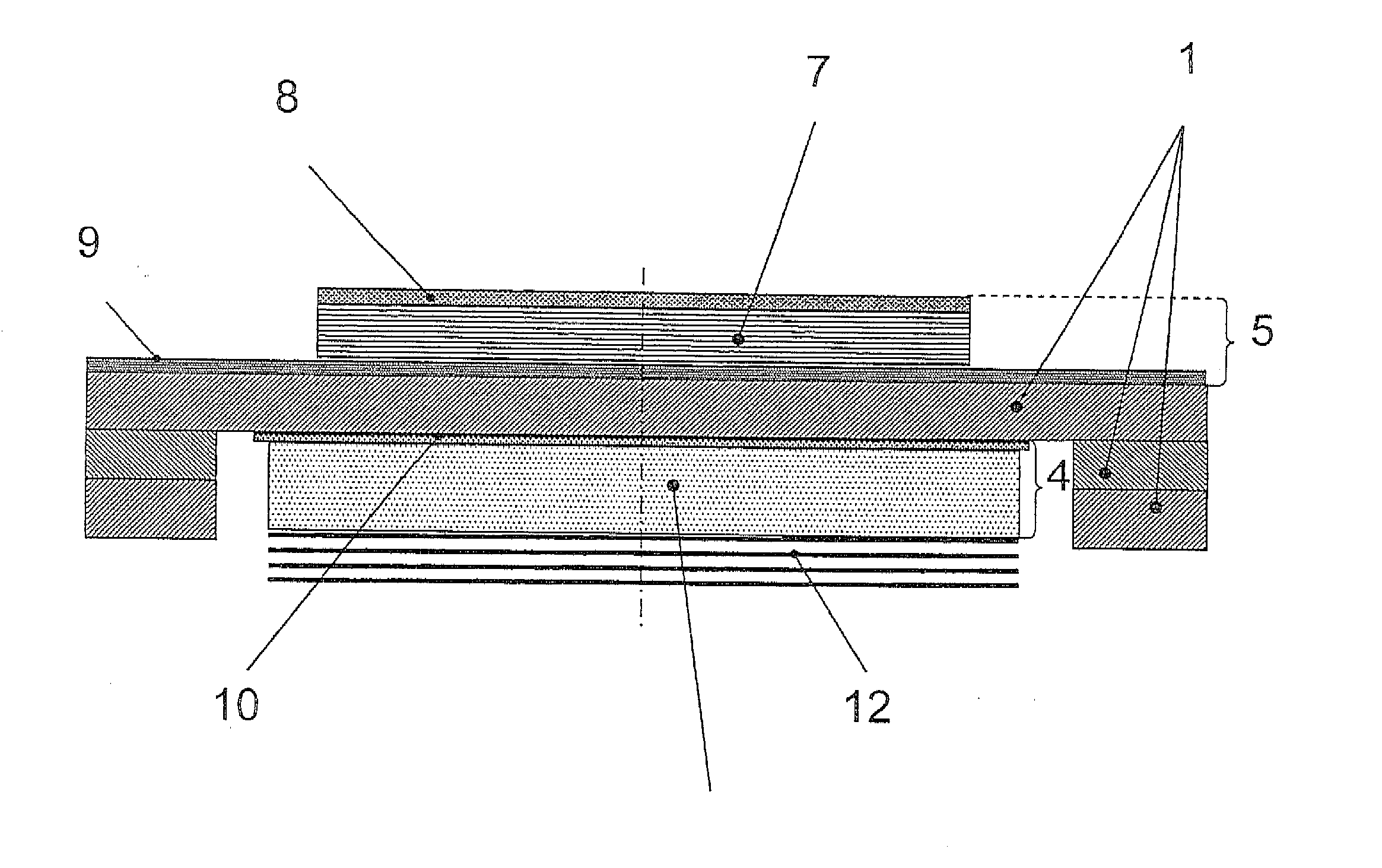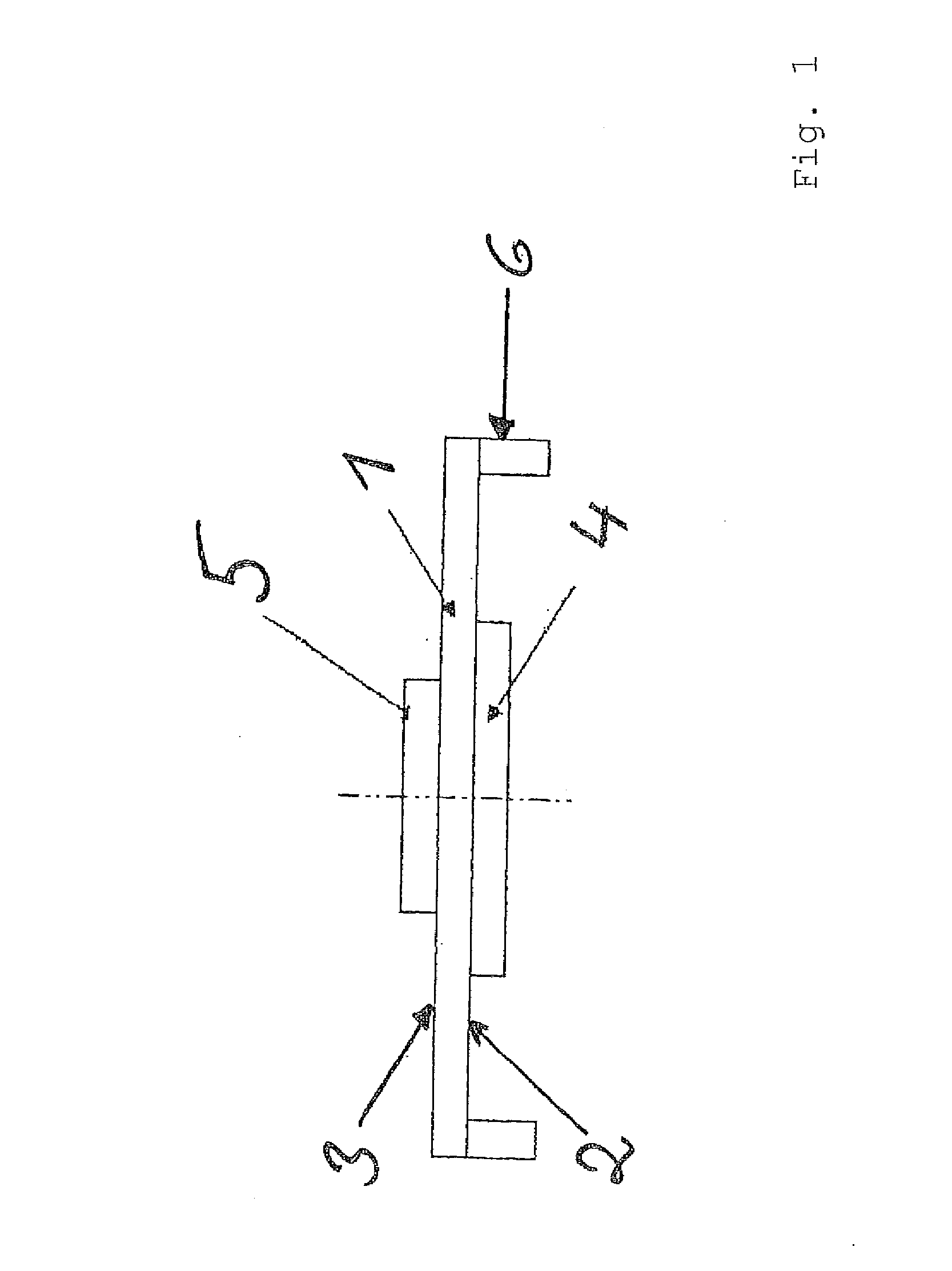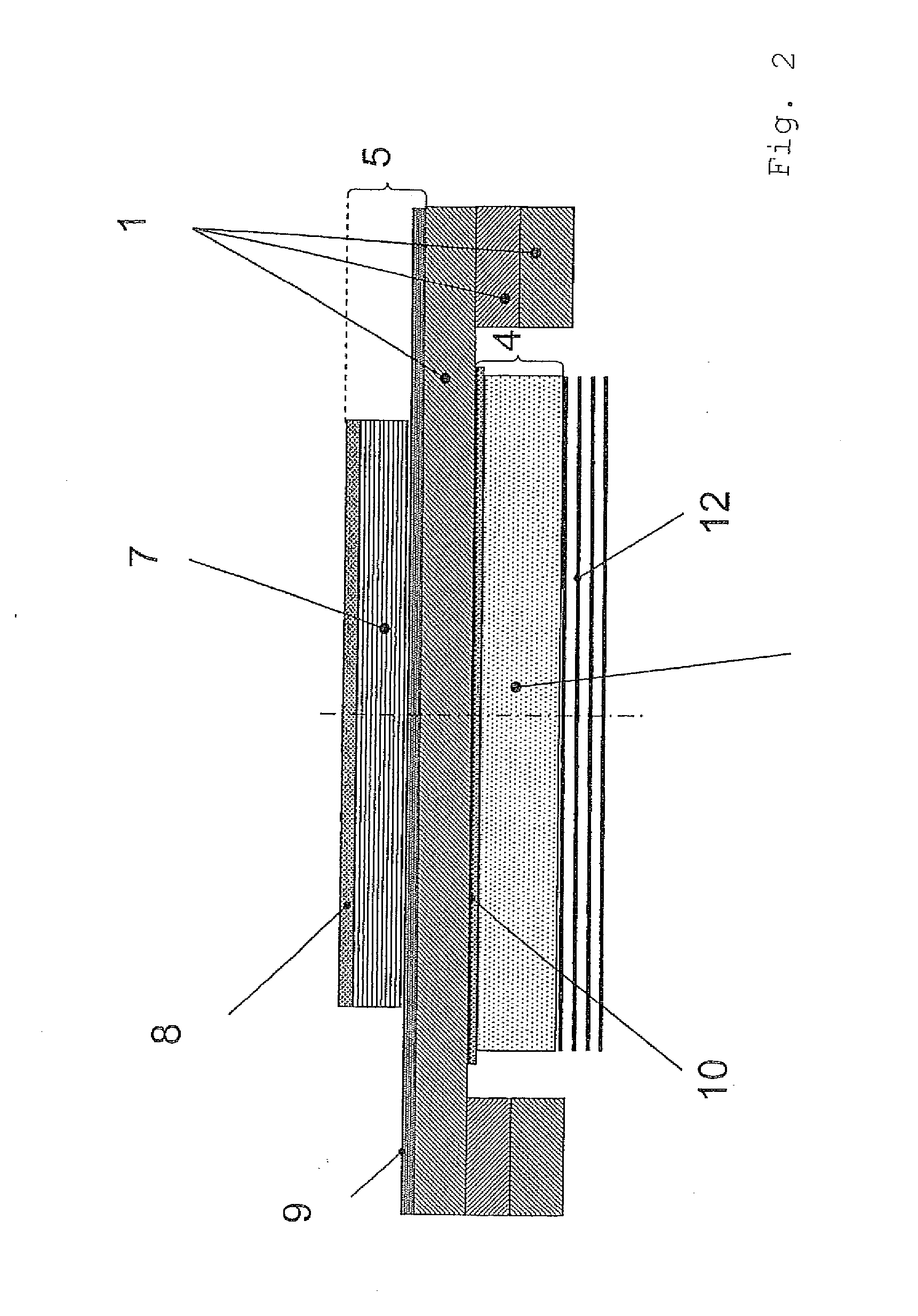Adaptive deformable mirror for compensation of defects of a wavefront
- Summary
- Abstract
- Description
- Claims
- Application Information
AI Technical Summary
Benefits of technology
Problems solved by technology
Method used
Image
Examples
Embodiment Construction
[0031]A few examples of adaptive mirrors and arrangements according to the invention are provided in the following. There are shown:
[0032]FIG. 1 a basic construction of an adaptive mirror according to the invention,
[0033]FIG. 2 a construction of an embodiment of an adaptive mirror according to the invention, and
[0034]FIG. 3A-3D a plan view on an adaptive mirror with various actuation methods via differently disposed partial electrodes.
[0035]FIG. 1 shows the cross-section through an adaptive mirror as is described in the present invention. The same or similar reference numbers here thereby describe the same or similar elements in the following Figures.
[0036]The adaptive mirror is constructed from a substrate layer 1 which is at most 1,000 μm thick, on the first surface 2 of which a reflecting layer 4 and on the second surface 3 of which at least one actuator 5 is applied. At the edges of the substrate layer 1 on the first surface 2 thereof, a mounting 6 is fitted and has for LTCC the...
PUM
| Property | Measurement | Unit |
|---|---|---|
| Thickness | aaaaa | aaaaa |
| Thickness | aaaaa | aaaaa |
| Thickness | aaaaa | aaaaa |
Abstract
Description
Claims
Application Information
 Login to View More
Login to View More - R&D
- Intellectual Property
- Life Sciences
- Materials
- Tech Scout
- Unparalleled Data Quality
- Higher Quality Content
- 60% Fewer Hallucinations
Browse by: Latest US Patents, China's latest patents, Technical Efficacy Thesaurus, Application Domain, Technology Topic, Popular Technical Reports.
© 2025 PatSnap. All rights reserved.Legal|Privacy policy|Modern Slavery Act Transparency Statement|Sitemap|About US| Contact US: help@patsnap.com



